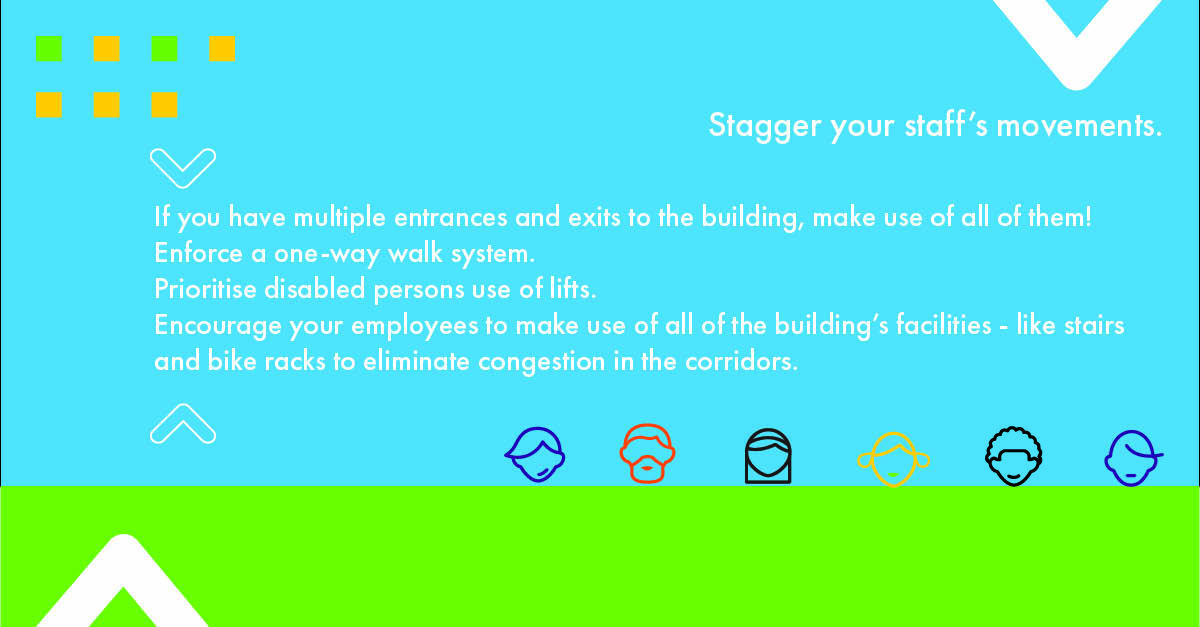Welcome to part two of your office health and safety check!
In part one, we covered the significance light, air, and ergonomics have on your workforce and your business.
Part two covers noise, layout, and social distancing in the ‘New Normal.’
According to our White Paper findings, one-fifth of businesses see the biggest office change being the social distancing measures being enforced. 33% responded that the most useful information they can have right now is ‘How can I ensure my people remain happy, healthy and safe?’
Healthcare consultancy HIC, there is a 25% difference in productivity reported by comfortable and uncomfortable staff.
All the research is telling us is that you need to know how to create a hygienic work environment - so without further ado, here are a few more factors to consider…
How does your current workplace measure up to be a productive work environment?
1. Measure and vary your acoustic levels and noise control in the office.
Business Development Director at Flexioffices, Michael Dubicki, encourages you to ask yourself:
“As you’re walking around your office, what can you hear?”
Exposed brick-building offices with terrarium-like glass dividing offices are all well and good, as long as they are adequately soundproofed. There is nothing worse than trying to get your head down only to hear the buzzing vibrato of voices next door.
Ways to optimise concentration without silence at work:
White noise is supposedly preferable to blank noise at work.
More than a third say keyboard typing, phones ringing disturb them
37% of respondents in View, Inc Workplace Wellness study wanted low noise level areas and sound privacy.
‘Buzz’ noise is good.
The faint buzz of chat and interaction can be positive when it comes to concentration in the office. Waye et al found the elimination of low-frequency ventilation noise resulted in an 8% improvement in interference with job-performance.
However, View’s Study reported that half of workers’ reported feeling distracted by overhearing their colleagues at work.
It’s difficult to control and analyse what truly is the most effective sound when it comes to work because people work differently. But don’t despair, this subjective point brings us onto…
2. Strategically splitting the space can optimise comfort and concentration at work.
Strategically splitting your workspace into designated zones can be an effective way to resolve the noise-subjectivity issue. A few recommendations are:
Use Temporary screens.
This temporary ‘pop-up’ wall can be an innovative alternative to installing walls that are expensive and can be limiting once a work project is complete and there is no need for that space to remain detached.
Use Activity-Based Work (ABW) solutions.
I.e: using work zones for different tasks can also be an effective way of ensuring your office is as productive as it can possibly be. Activity Work-Based solutions have modernised the way that offices are designed. If you’d like to know a bit more about ABW, check out this blog post.
The incredible thing about ABW solutions is that they don’t restrict certain spaces to one specific activity. The same space can double up as a breakout space or informal meeting area, for instance.

Use Sit-stand desks.
According to a seven-week study completed by healthline, participants who used sit-stand adjustable desks reported reduced stress and fatigue levels at work. 87% of those participants reported increased vigour and energy throughout the day.
3. Adhere to social distancing measures.
There is much Government advice when it comes to implementing social distancing measures. For your ease, here’s a few key things that can help make your workplace pass a COVID-19 hygiene check:

Stagger your staff’s movements.
If you have multiple entrances and exits to the building, make use of all of them! Enforce a one-way walk system. Prioritise disabled persons use of lifts. Encourage your employees to make use of all of the building’s facilities - like stairs and bike racks to eliminate congestion in the corridors.
Don’t have workstations face-to-face.
Where possible, keep staff 2 metres or at the very least, one metre apart at the desk. Have desks side-by-side rather than facing each other and where possible, screen-off workstations.
Work with your office providers and be consistent!
This will be a big help in communal areas. Screen-off large spaces and ensure your guidelines are in keeping with your office provider. Encourage staff to sign up and agree to adhere to the building’s social distancing policy as they arrive. Something as simple as this will encourage adherence and remind your people to comply.
There is plenty of fleshed-out social distancing advice on the UK Government’s website if you’d like more official intel on any of the above.
How did your workplace fare in the healthcheck?
We hear you - “Ok, so there’s light, air, comfy seating, screening-off spaces… all at 2 metres….”
We understand that there is much to consider when it comes to health-checking the workspace. And the call to do so is more prominent now than ever before.
Unfortunately, this is a big and largely under-researched and under-reported concern. But it’s one that can be rectified easily if the necessary and proactive steps outlined above are applied.
Or are you unsure how you’ll be able to justify putting all of these measures in place from a financial perspective?
Watch this space for next week’s blog: Co-working spaces are a cost-saving no-brainer and here's why. We’ll outline from an investment perspective what a healthy and happy workplace could do for your business.
Still unsure where your workplace measures up?
Feel free to get in touch with one of our Office experts, we’d be happy to help.